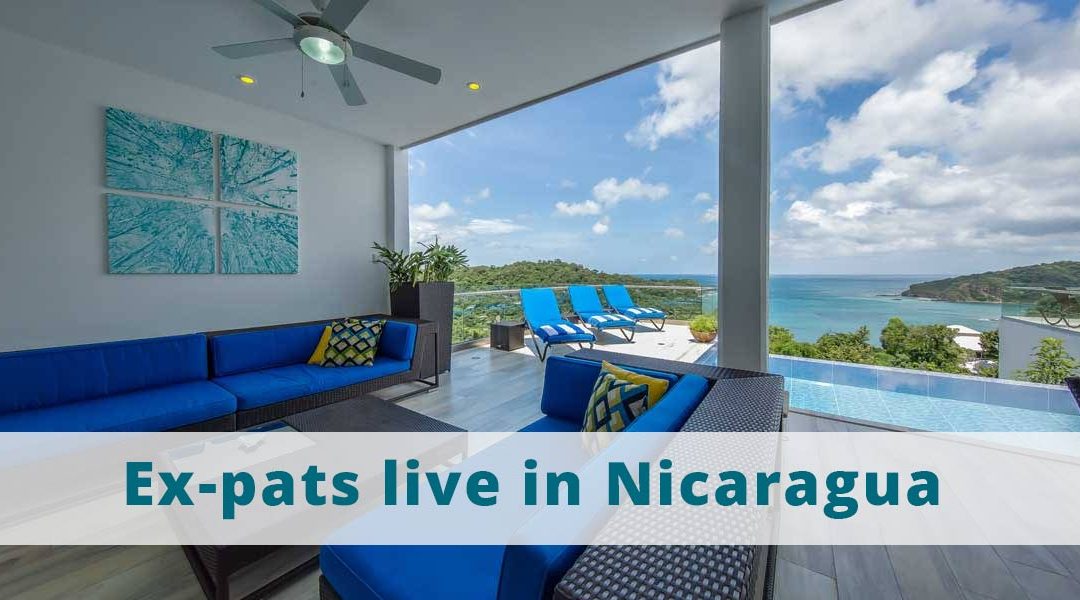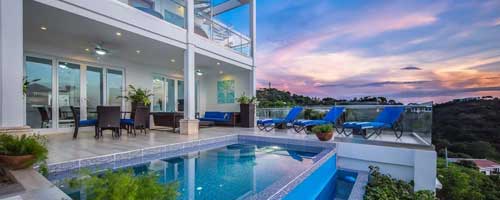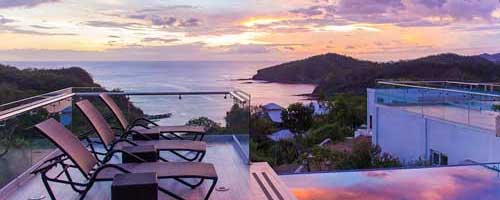Nicaragua is one of the world’s most beautiful countries. Its physical beauty is incomparable to any other. This is a country the size of New York State that has a coastline that stretches for 910 kilometres (566 miles). On the Caribbean side, you may enjoy the quiet, beautiful blue ocean, where snorkelling is a popular hobby. Or, with over 300 days of offshore winds and consistent year-round waves, face the cooler blue seas of the Pacific and surf to your heart’s content.
The country is peppered with dramatic volcanoes, several of which are currently active. You may see red-hot lava roiling just below you if you visit the Masaya volcano. Lake Colcibolca, the world’s 19th largest lake, is home to the lovely island of Ometepe, which offers endless water activities. The island is home to monkeys and other wildlife, waterfalls, rivers, and two active volcanoes.
One of the most common reasons ex-pats in Nicaragua picked Nicaragua as their home is that the people are among the greatest on the planet. Nicaraguans are generous and loving people. Families are close-knit, and many of them attend church. However, learning Spanish will help you integrate into the Nicaraguan community and form strong friendships with the locals. Most public schools do not teach English, and most business owners, doctors, lawyers, police officers, and government officials only speak Spanish. Nicaragua is distinct from its Latin peers in this regard.
Because of the laws set by the government to help ex-pats in Nicaragua get their businesses up and running quickly, starting a business in Nicaragua is easier than in most other countries. Choose a tourism-related company to take advantage of fantastic tax breaks and other benefits.
Best Places for Remote working and retiring in Nicaragua
If you’re thinking about remote working in Nicaragua or retiring in Nicaragua, make sure you take some time to explore the country. Experience what life is like for retirees in the towns and cities you visit. “Consider the fact the climate and surroundings you are seeking for,” one retiree in Nicaragua said. Leon, in our opinion, is the hottest city. Granada is hot as well, although not quite as much as Leon. The climate in Matagalpa and Esteli is cooler because they are located in the mountains. The Pacific Coast is warm and dry, yet there is constantly a breeze. The Corn Islands are a group of islands in the Caribbean that are tropical. The largest ex-pat communities are in Granada and San Juan del Sur. Nicaragua has it all; consider where you will feel most at ease.
Remember that you can only visit museums and art galleries so many times before they become monotonous; living there is an entirely different experience.” According to another ex-pat, “Because my wife runs an art studio and gallery, she needs additional people to help her (tourists, ex-pats, and locals). It would not be easy to survive in a town the size of Granada. Working with foundations and community activities takes up a lot of my time. We both adore Esteli, Matagalpa, Jinotega, and the many other beautiful towns on the other side of Lake Cocibolca. Still, there aren’t nearly enough ex-pats to make our ideal life a reality. Many of our friends rough it by living more independently. While we have a lot of Nica friends and neighbours, I need to interact with ex-pats with similar education and backgrounds now and then to keep my sanity.”
If you choose to live in Nicaragua, you will be blessed with sun and sea, fresh mountain breezes, and well-appointed colonial cities. In this beautiful country, you can have whatever you want. A couple may comfortably live in this country for $1,500 per month, regardless of whether they own or rent. (A furnished home, all utilities, meals, entertainment, dining out, WiFi, and so on.)
To get you started, we, the Residencial Malibu, made a list of best-recommended spots to live for the ex-pats in Nicaragua.
The Greatest Beach Town: San Juan del Sur
Despite its small size, we consider this three-square-block coastal city one of the most enjoyable locations ex-pats in Nicaragua have ever visited. You will get to meet individuals from all over the world who are colourful, funny, and charming. Add in the friendly Nicaraguans, and you’ve got yourself a terrific “people place” to reside. But, of course, this is not a haven for snowbird ex-pats; people who travel from other nations to stay in San Juan del Sur are year-round residents.
Twenty-two fantastic beaches, each one more stunning than the next one, are added to the pleasure. Some have hotels and restaurants, while others are completely undeveloped and have only a few dwellings because they are private developments.
When you arrive, several ex-pats will take you around. Where can you find the finest pizza, the cheapest and most honest car mechanic, the best hair salon, the freshest food, and so on? It won’t take that long for you to feel at ease in this town that was once known for its richness of live music venues throughout the week. The music scene is slowly returning, which is “music to everyone’s ears.”
“In San Juan, you may drop by the El Dorado on the beach road, which is generally populated with individuals who like it just fine,” one ex-pat said. Then go to Big Wave Dave’s, which is swarming with pessimists for some reason. Your results may vary. El Gato Negro coffee shop is not to be missed”. You can be a nobody. Probably the finest spot to meet and converse with foreigners. Before the kids come in later, Henry’s Iguana in the mornings for breakfast is occasionally OK for ex-pat conversations.”
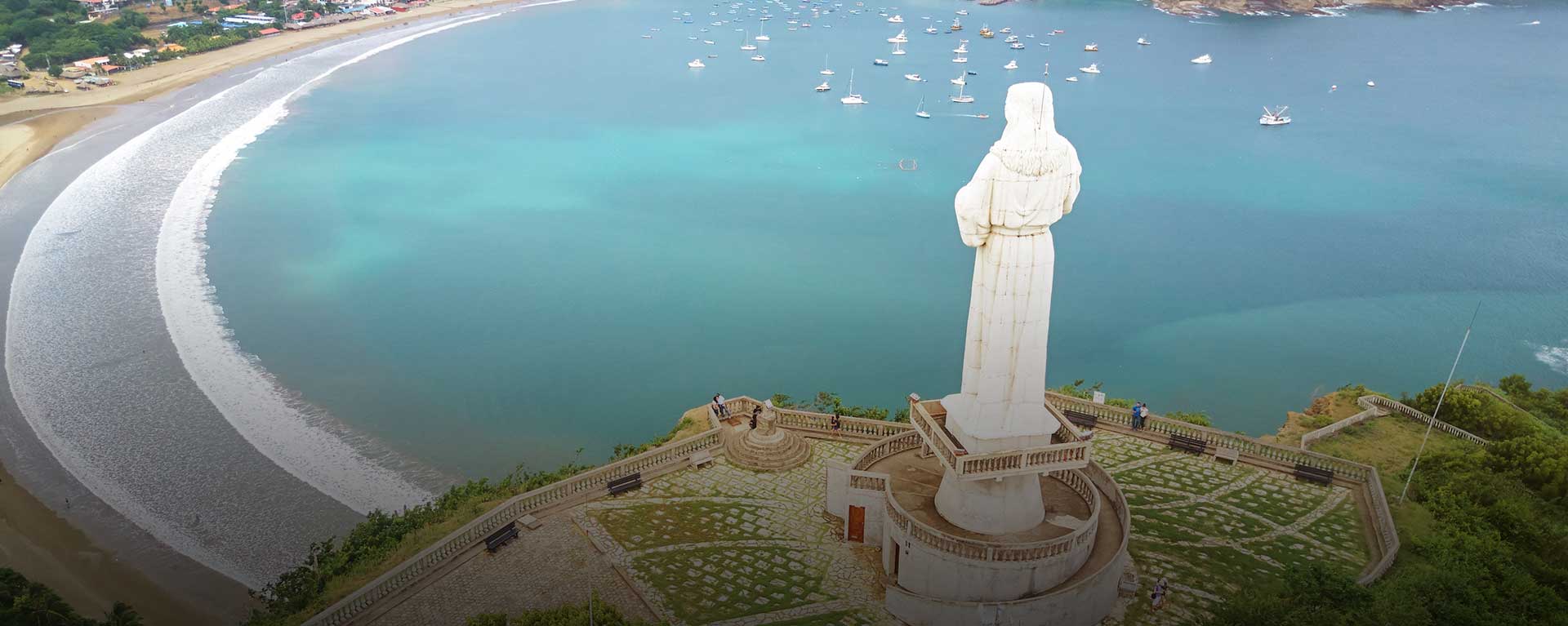
Granada: The Colonial City for Expats Nicaragua
This restored colonial town is frequently referred to as the most beautiful colonial city in the Americas. You may easily find your way about the city if you merely look for the church spires, thanks to its beautiful gold/yellow church in the town square as its cornerstone. With a population of about 150,000, Granada is a great area to live with practically all of the facilities you’re used to. Modern supermarkets and hardware stores have popped up in major cities around the country, including Granada, in the last 14 years.
Granada is positioned on the shores of Lake Colcibolca, the world’s 19th largest lake. It seems more like an ocean on windy days, with its whitecaps. Over 300 little islands dot the coast near the city within the lake. It is likely to take a boat ride through them. The majority of the islands are deserted, although some do feature houses, restaurants, and even the ability to rent an island for the weekend. Do you want to be the owner of an island? There are usually some available for purchase.
With a sizable ex-pat population, Granada has restaurants and small businesses that cater to this community. This city offers not just a wide range of delicious native food, but also pancakes, hamburgers, pizza, and pasta prepared to your desires.
A night out on the Calzada, the major roadway from Central Park to the lake, is not to be missed. This roadway is closed to traffic at night and transformed into a European-style dining street featuring outdoor restaurants, cafes, and street entertainment. You never know what kind of music or entertainment you’ll hear or see while dining. Every night is unique.
Granada is the place to visit if you’ve always wanted to live in an old colonial home. Beautiful houses with hardwood floors and stairwells, wooden beams, and interior courtyards with swimming pools may be found right in the heart of town, and many are for sale.
In Colonial Granada, you can live in peace and splendour.
“We’ve had a nice time here [in Granada].” What you need to consider is what you’ll do once you arrive. Successful ex-pats reimagine their life and pursue goals they’ve always wanted to pursue. We volunteer, are involved in our church, and pursue interests that we didn’t have time for in our previous lives. We also travel extensively. Central America is a fantastic travel destination. We’ve located the majority of what we’re looking for. Once a month, we go to Managua for groceries and entertainment,” said an ex-pat in Granada.
Leon: a true Nicaraguan city.
Many people believe that the colonial city of Santiago de los Caballeros de León, or simply Leon, personifies “true” Nicaragua. However, despite the fact that both cities have gorgeous architecture, the second-largest city in Nicaragua feels more Nicaraguan and less “gringofied” than Granada, founded in 1524. Leon was initially located further east, but following the terrible eruption of the Momotombo volcano in 1610, the entire city, including whole cemeteries, was relocated to its current location. At Leon Viejo, you may see the ruins of the original Leon.
Leon has the oldest colonial churches of any city in Nicaragua, all in various degrees of renovation or deterioration, but all interesting. Cathedral de la Asunción, in the town centre, is a must-see church that took 100 years to construct and is Central America’s largest church. Pay a little extra to climb to the top of the bell tower and then out onto the roof, where you’ll be treated to breathtaking views of Leon and the surrounding villages.
Leon is still a significant city in terms of trade, agriculture, and industry. Sugar cane,cotton, rice, peanuts, plantains, cattle, and sorghum are major exports. Shoes, processed cotton, and saddles are also produced in the city.
On the other hand, Leon’s fame stems from its status as Nicaragua’s liberal political and intellectual centre. The University of Leon, founded in 1812, was absorbed into the Nicaraguan National University system in 1952. As a result, the city is well-known as a university town, with a few hundred thousand people throughout the school year. As you walk by the numerous coffee shops and cafes, you may hear and watch young people engaged in intense conversations about philosophy, politics, and life in general. Nevertheless, Leon attracts fewer visitors than Granada. One factor is the extreme heat in the months preceding the rainy season (March through May). However, unlike in Granada, travellers, volunteers, and other ex-pats in Nicaragua are more likely to fit in with the natives here.
Leon has a long and rich history of revolution. The Leon Sandinistas were involved in brutal street fighting during the 1979 revolution against Somoza’s government. In retaliation, Somoza bombed the city, killing residents as well as fighters. Bullet holes in nearby buildings can still be seen, as well as remnants of the bombing at the San Sebastian church.
Matagalpa: Natural Beauty at its Finest
For ex-pats who prefer a colder temperature, Matagalpa is still a fantastic area to reside. Because Nicaragua is entirely tropical or subtropical, most towns have a hot environment all year, which not everyone enjoys. Matagalpa, dubbed “the country of eternal spring,” has a climate similar to San Diego, with some days requiring a jacket or sweater.
Matagalpa’s climate is milder, and it receives more rain; therefore, the city and its surroundings are green all year (the rest of Nicaragua turn into brown in the dry season with no rain and constant hot, sunny days for six months). In the countryside around the city, there are gorgeous forests with lakes, streams, and waterfalls. Matagalpa is the most attractive city in Nicaragua, situated at 2,237 feet (682 meters) in the Apante mountain range.
Matagalpa is Nicaragua’s leading agricultural centre due to its pleasant climate. Cacao and coffee farms can be found all over the world. Take note of the massive cow and horse farms as well. Matagalpa is noted for its horses and the “Hipica,” a yearly horse parade. As the city stops traffic for the day to allow the public a chance to witness these lovely beasts “strut their stuff,” an 8-hour stream of the most gorgeous oiled, braided, and otherwise well-maintained horses pass down the streets. You’ll even get to see horses that have been trained to salsa dance!
Cacao, coffee, meat, cheese, vegetables, and fruits are among Matagalpa’s exports. In addition, flowers, wood, corn, beans, oranges, grapefruit, bananas, broccoli, and cauliflower are all grown in the city for local use. The city’s economy is also based on eco-tourism, with nature treks and lodging options such as the magnificent Selva Negra Wildlife Refuge, which spans over 300 acres (120 hectares) of land conservation and preservation of the region’s flora and fauna.
Retiring in Rivas, Nicaragua
Rivas is located 40 minutes northeast of San Juan del Sur and 1 hour south of Granada.
“Rivas is located 40 minutes northeast of San Juan del Sur and 1 hour south of Granada. Rivas has been on my mind for a while because it is a nice quiet area to relax. Consumer shopping is restricted to the same chain stores, such as La Curacao and Gallo más Gallo, as well as a Max Pali, but if you know where to look, you can find almost anything. SJDS, Ometepe, and even Masaya are all within a short distance. The beaches and surfing in the Tola &Giganti area are great, despite Pellas’Guacalito de la Isla project. Housing costs appear to have doubled since I looked some years ago, but if you settle a little, you can still buy a good reasonably recent ‘Nica’ house for around $60k or much less. Rents are reasonable, ranging from $100 to $200 depending on quality. But, as one ex-pat in Nicaragua suggested, “prices and rents rely on a lot of factors about what you want, so you have to go there and look.” “Rivas has a different climate, and it is flat,” another ex-pat explained. Between the coast and the lake, there is much to do. It’s a big transit point with a large number of people going through.”
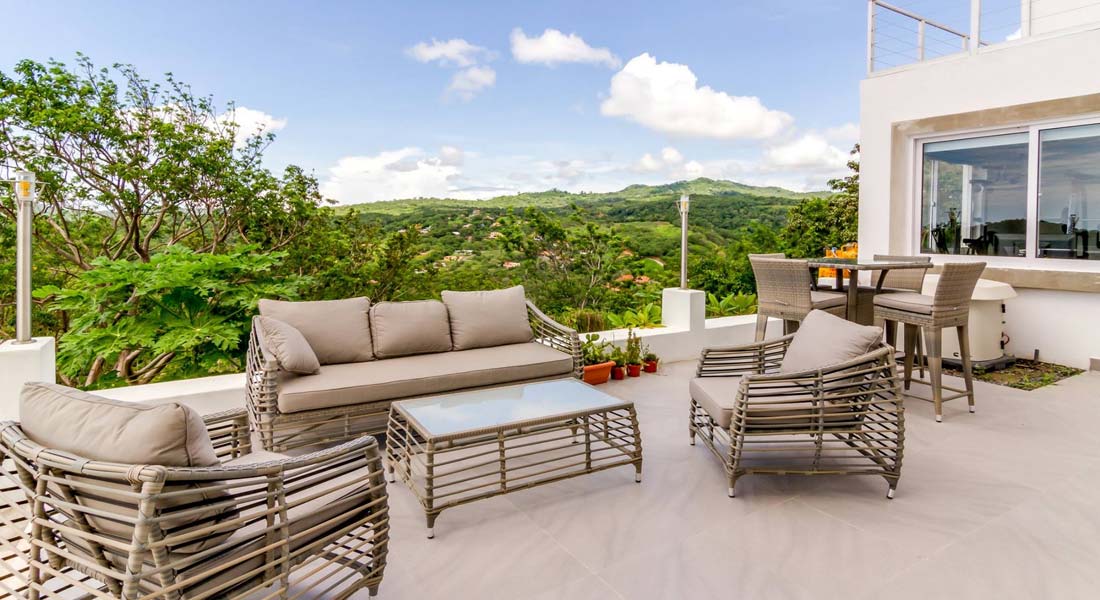
“As we have a house on the coast and have to pass through Rivas all the time, I might be able to provide some insight on the Rivas area.” There are a few things that I can’t find in Rivas. Apart from that, the MaxiPali (the new one on the PanAm, not the one in town) appears to be expanding. It’s spotless and has a lot more than you might expect—also good chicken and meat. In addition, Rivas features a plethora of banks, hardware stores, laundrymats, Sherwin Williams (paint), and a plethora of other smaller stores to meet practically any need. In terms of security, I’ve never felt unsafe in any part of Rivas. Just don’t be a jerk and respect the locals, and they’ll gladly assist you with that brilliant Nica smile. You’re near to the beaches, the lake, SJDS — and even Masaya and Granada,” another ex-pat explained.
The Corn Islands
The Corn Islands, located off the coast in the Caribbean Sea, feel like another universe. Ex-pats who do not speak Spanish will find settling in because the local language is English. Both Big Corn and Little Corn offer a laid-back Caribbean ambience and welcoming community.
White sand beaches line the islands, which are surrounded by a flat, turquoise sea. Scuba diving, fishing, kayaking, stand-up paddleboarding, snorkelling, and sailing are all popular activities on the sea.
For city needs, Big Corn Island has a tiny airport with two-hour flights to Managua. It also has highways, automobiles, and a plethora of hotels and restaurants. Little Corn Island is slightly less developed than Big Corn Island and can only be reached by boat. Even though there isnot one car on the island and it is only about a mile in diameter, it has an ex-pat population, a yoga studio, two dive shops, and a few restaurants. It’s a utopia that hasn’t been corrupted.
The Corn Islands are not for everybody, but ex-pats who have chosen to live there are enthuse about it. Instead of waiting for the freight boat that comes once a week from El Rama on the mainland, a few have started their own farms.
Popoyo and Las Penitas
For ex-pats looking for a more off-the-grid experience, there are several magnificent beaches on the coast around a half-hour drive from Leon. Las Penitas is a small fishing village known for its excellent surfing. It’s located on the Isla Juan Venado reserve, with turtle hatcheries that volunteers can watch or help with. Popoyo is another small surf town. Both are close to Leon and offer city comforts.
Nicaragua is a country with a diversified terrain and culture. Many ex-pats are beginning to appreciate the country’s and people’s attractiveness and are considering settling down there. One of these growing ex-pat hotspots could be the ideal location for you to start a new life.

